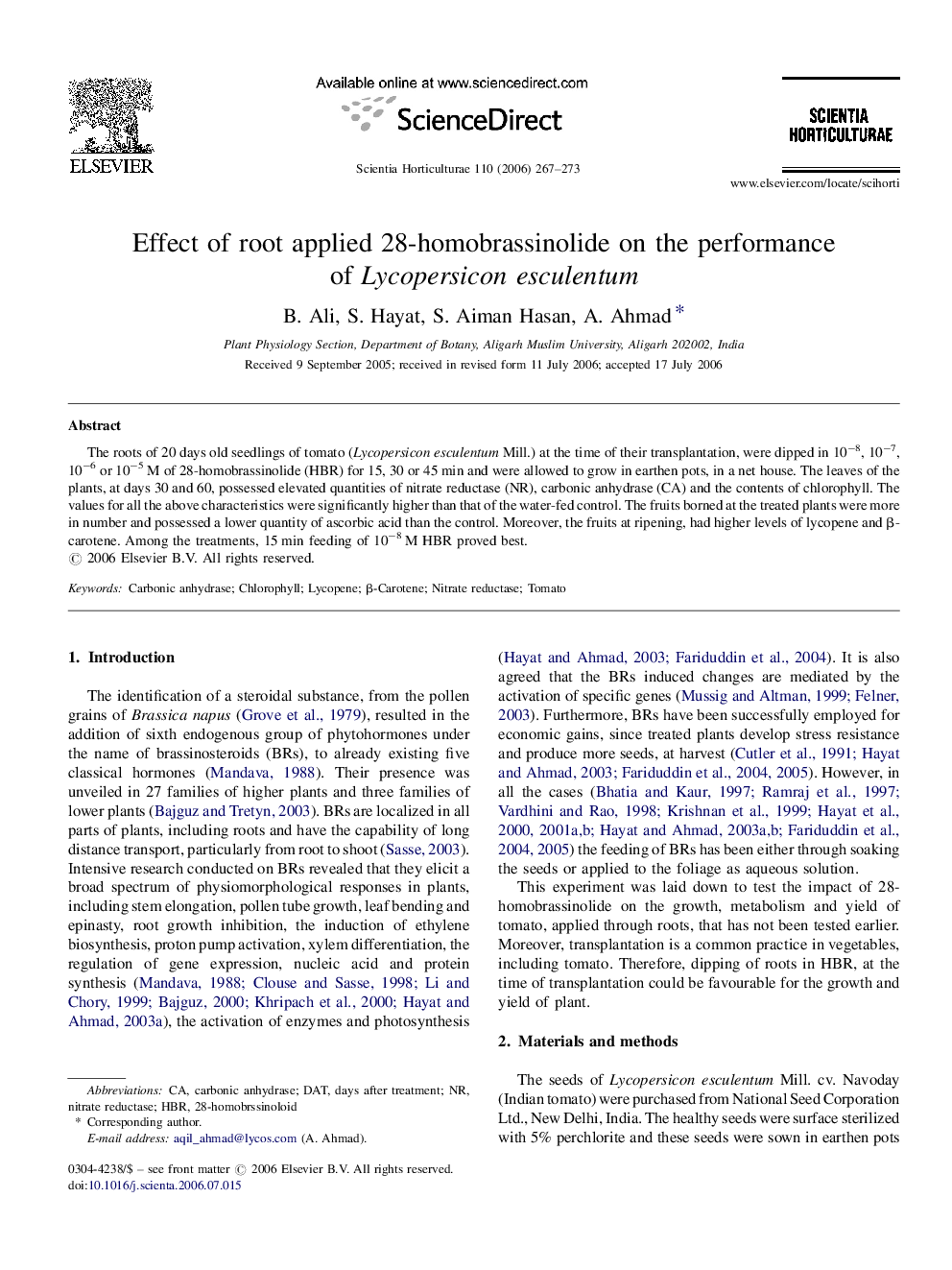| Article ID | Journal | Published Year | Pages | File Type |
|---|---|---|---|---|
| 4570000 | Scientia Horticulturae | 2006 | 7 Pages |
Abstract
The roots of 20 days old seedlings of tomato (Lycopersicon esculentum Mill.) at the time of their transplantation, were dipped in 10â8, 10â7, 10â6 or 10â5 M of 28-homobrassinolide (HBR) for 15, 30 or 45 min and were allowed to grow in earthen pots, in a net house. The leaves of the plants, at days 30 and 60, possessed elevated quantities of nitrate reductase (NR), carbonic anhydrase (CA) and the contents of chlorophyll. The values for all the above characteristics were significantly higher than that of the water-fed control. The fruits borned at the treated plants were more in number and possessed a lower quantity of ascorbic acid than the control. Moreover, the fruits at ripening, had higher levels of lycopene and β-carotene. Among the treatments, 15 min feeding of 10â8 M HBR proved best.
Keywords
Related Topics
Life Sciences
Agricultural and Biological Sciences
Horticulture
Authors
B. Ali, S. Hayat, S. Aiman Hasan, A. Ahmad,
